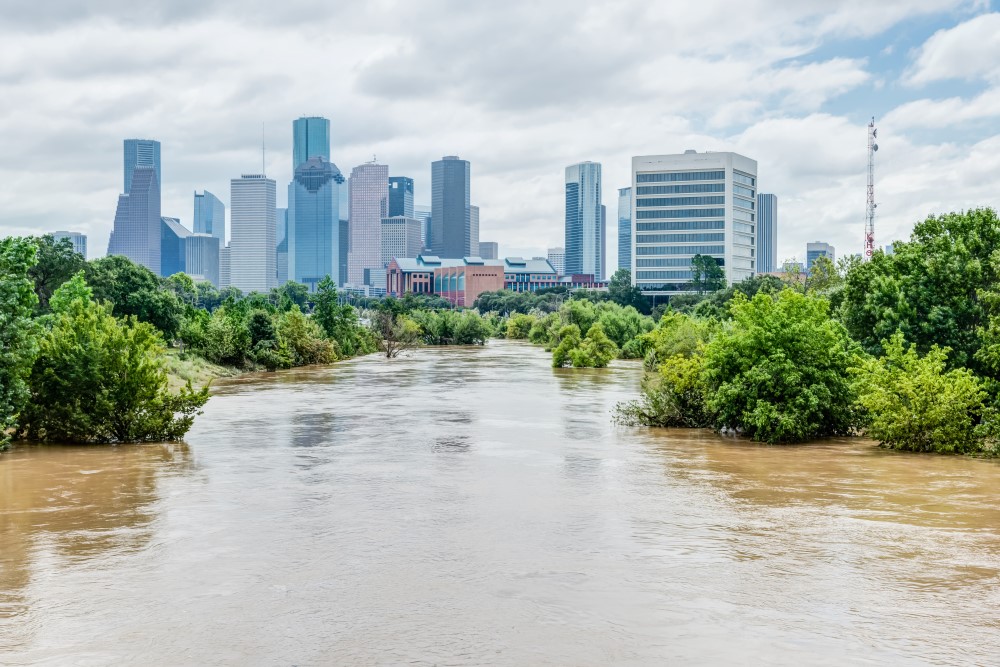Why do manufacturers need to understand the risks of climate change?

The World Economic Forum identified extreme weather events as one of the most severe global risks – second only to climate action failure. Accounting for 23% of direct carbon emissions in the US and emitting 880m tonnes of carbon dioxide in Europe, the manufacturing industry is already facing significant pressure to set Net Zero targets.
However, as COP26 made clear, the physical impacts of climate change are already here, and Net Zero targets will not protect against already locked-in climate volatility. Heavy reliance on fixed assets such as factories, globalized supply chains, and customer reputations makes manufacturers particularly vulnerable to these physical risks. For this reason, they will need to understand the impact of climate change more than most industries.
Why do supply chains make manufacturers vulnerable to climate risk?
An organization is only as strong as its most vulnerable point. Stretching across the globe, international supply chains that enable nearly $20 trillion of trade annually are especially vulnerable to climate hazards due to the ripple effect. One extreme weather event affecting a single physical asset could create seismic waves that are felt throughout the entire supply chain.
“As climate change makes extreme weather more frequent and/or severe, it increases the annual probability of events that are more intense than manufacturing assets are constructed to withstand, increasing the likelihood of supply-chain disruptions.”
Insurer AON estimates that the economic loss from global natural catastrophes reached $343 billion, 27% higher than the 21st-century average. Upstream or downstream, an organization that has failed to protect its physical assets from climate risk could potentially disrupt the entire chain. Cervest’s recent Climate Intelligence Outlook survey of US and UK business decision-makers shows climate volatility is impacting physical assets and the bottom line for nearly 90% of organizations.
More disruptive than COVID-19
The recent chip shortage serves as a stark reminder of how supply chain disruption can severely threaten businesses' bottom line. According to Accenture, 94% of Fortune 1000 companies are seeing supply chain disruptions from COVID-19 and 55% of companies plan to downgrade their growth outlooks (or have already done so).
Scientists have suggested that climate change could cause greater supply chain disruptions than the pandemic. The IPCC estimates that the global economic cost of climate change reducing productivity may be more than $2 trillion by 2030. Losses from California’s 2018 wildfires totaled nearly $150 billion – around $88 billion of which resulted from supply chain disruption alone.
The ESG of manufacturing under heat stress
The effects of increasingly extreme climatic conditions on the availability of critical utilities, as well as workability and productivity, will have major business consequences for manufacturers too. Heat stress is just one example of these extreme climatic conditions.
“Your whole economic model changes at a certain temperature..."
Iggy witnessed severely hot conditions first-hand while managing a farm in Ghana, “On extreme heat days, we knew ahead of time we had to change all of our labor rotas,” he says. “Beyond a certain temperature, the human body cannot work because the outside humidity is so high.”
In an interview with explorer Rosie Stancer, Iggy goes on to highlight how this affects labor productivity. Studies have shown that productivity begins to drop at around 25°C. Manufacturing in areas particularly prone to heat stress will require new adaptation strategies. For example, installing climate control, providing more frequent breaks or even increasing night shifts. All of which will incur greater costs and considerations, such as how night shifts affect employee wellbeing, for manufacturers.
How can manufacturers protect their bottom line from climate risk?
Manufacturers who put climate at the core of their business decision-making are more able to act on climate risk and capitalize on climate opportunities. McKinsey estimates “that downstream players could lose up to a third of annual revenue if supply is disrupted for an illustrative period of five months... A well-prepared player, on the other hand, may only lose about five percent of revenue in a similar event.”
You cannot take decisive action on climate risk unless you can discover, understand and share it with stakeholders. By becoming a climate intelligent manufacturer, your business can protect its bottom line from climate risk.
How do you become a climate intelligent manufacturer? Download the free ebook.
Share this article
Our latest news and insights

Accenture and Cervest collaborate to bring innovative solutions to clients seeking resilience amid increased climate risk
Read more
What is climate intelligence and why do businesses and governments need it?
Read more